On May 21st, I appeared on BBC Radio Wales’ Wales at Work to talk about the challenges people face when trying to ‘be creative’ and how businesses can encourage their staff to break through the “I’m not creative” barrier. I was joined by Helen Bartlett, Design Manager at office fit out and design company Paramount Interiors, who spoke about the impact office design can have on creativity.
Helen wrote about the interview in her “Office design that encourages creativity” blog, and I thought it would be interesting to get some more of her thoughts on how the layout and design of the workplace can foster and inspire creativity.
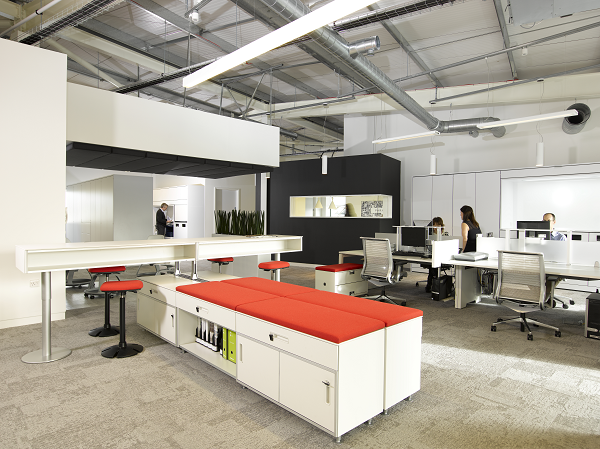
Paramount Interiors’ ShowOffice
A Culture of Creativity
In my role as Design Manager at Paramount, I’ve worked on a number of high profile fit out projects for a wide selection of businesses. Given this experience, the most successful projects embraced creativity in the culture of the business long before they represented it in the layout of their office.
Some companies can suffer from what I call a ‘Google Complex’; it’s the fixation that people have to try and turn their business into a Google-style workplace. I think it’s fair to say that not many businesses will have the budget or space to accommodate the slides, tree houses and hammocks that they’ve become famous for. This is just as important, if not more so, when the nature of the business doesn’t really suit that sort of environment. A legal firm, for example, wouldn’t suit a Google-style workplace, since the way they do business on a daily basis isn’t the same as that of a multinational technology company whose workforce need to come up with off-the-wall creative ideas.
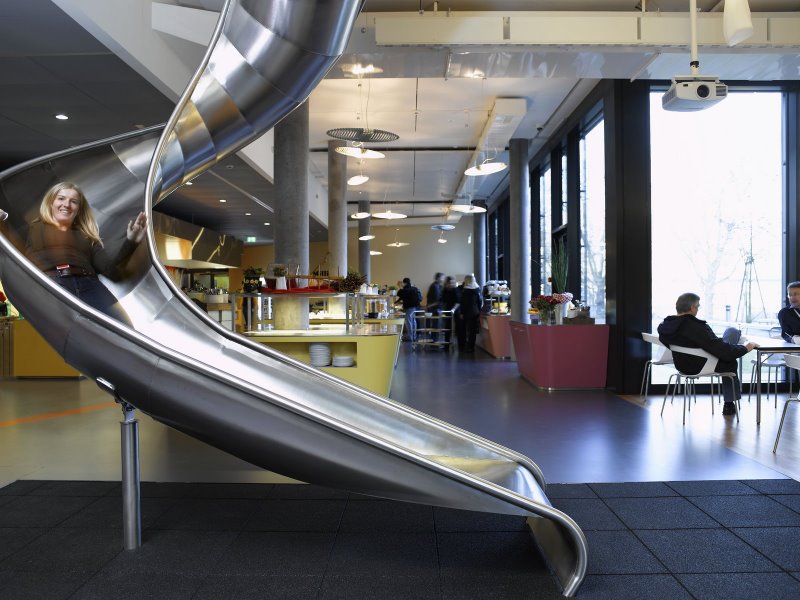
Google Zurich’s Slide (Image Source; Office Snapshots)
Exploring the Creative Process
Rather than getting too hung up on the more obvious ways that an office can be seen as ‘creative’ – like brightly coloured wall art or quirky furniture – when we work with clients, we look at the actual processes that staff are involved in and seek to create spaces that allow people to do them most effectively.
When creative problem solving and sharing ideas is an important part of a business, the first assumption is that an open plan layout will encourage people to get together more. While this may very well be the best option, it’s always worth exploring how staff are actually working most efficiently. An open plan will certainly allow for more social interaction but you’ll also need to balance a potential increase in noise levels and issues regarding privacy.
We are finding that a mix of areas designed to be used in different ways is the best approach to take. We can break this down into the 3Cs of an effective, productive workplace; Collaboration, Concentration, and Contemplation, as developed by the design bods at Kinnarps; the Swedish workspace solutions company.
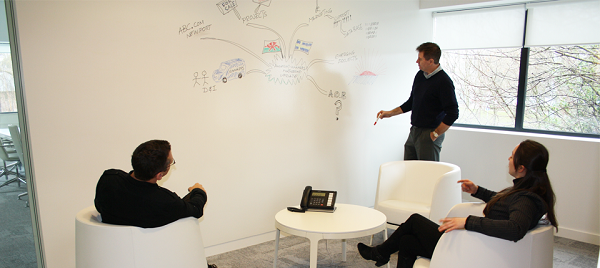
Write-on wall at Paramount’s ShowOffice
Spaces for Collaboration
When you consider spaces that encourage out of the box thinking, you’ll inevitably imagine an area that has a number of people in it throwing around ideas. A collaborative space will need to balance a sense of fun and freedom whilst still being physically comfortable. It’s all very well having a brightly coloured creative space, but if it’s overpowering then it may have the opposite effect. And funky deck chairs might look like a lot of fun, but if they make for an uncomfortable meeting you’ll be concentrating more on your numb derriere and less on the job at hand.
It’s also worth considering the practicalities of a creative meeting. Rather than cluttering up the room with a flip chart or searching for available wall space to stick up your notes, it’s so much easier to just write on a wall that’s covered in special whiteboard paint, like we do in our office.
You could even go ‘all out’ on your creative approach and follow GoCompare.com’s lead. We helped them to create 8 themed rooms for their offices, ranging from an indoor/outdoor room with fake grass instead of carpet and a 1970s retro lounge, complete with sofa and flying ducks on the wall. The important thing is to make sure that any space stays consistent with your own culture and makes it as easy as possible for people to use effectively.
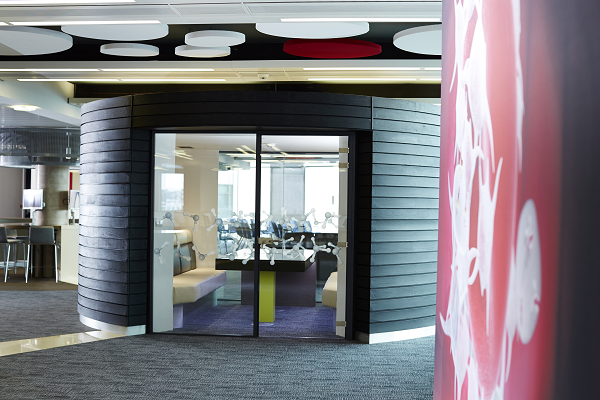
Multi Media Pod at Life Sciences Hub Wales
Spaces for Concentration
For every project or job that requires a team of people getting together, there are going to be just as many that need some solitude and privacy. Creativity doesn’t exclusively come from social interaction and sometimes you need time alone to process your thoughts and get away from the hustle and bustle of the office.
We will always incorporate areas into an office space that give staff somewhere to work alone or conduct private meetings. This needn’t be a room with a door though, a number of our fit outs use wall-mounted sound absorbing panels or screens to create enclosed areas or self-contained pods that sit in open plan layouts like small oases of calm.
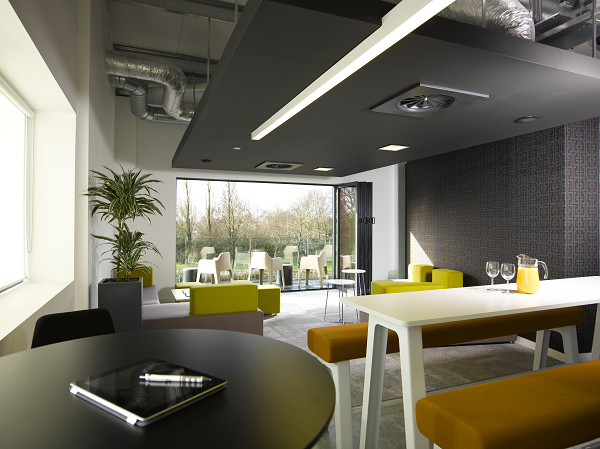
Break-out area at Paramount’s ShowOffice
Spaces for Contemplation
The final key to nurturing creativity in the workplace is actually providing places where no work is done. Or at least somewhere that allows staff to feel entirely relaxed. Very often, a space that looks less like an office and more like a coffee shop, or even a room in a house, can spark just as much creativity as a meeting in a collaboration space.
I freely admitted to the many listeners of BBC Radio Wales that some of my best ideas happen in the shower, which I’m still slightly regretting. But the point is that a corner of the office which doesn’t feel like an office not only gives staff a welcome retreat but could actually become the venue for chance encounters and ad-hoc creativity. In our own ShowOffice, we have created this with a café style break-out area and also a gym.
Encouraging creativity without a Google-sized budget
With an unlimited budget you can incorporate any and all of these aspects into your office design. But actually, you don’t need to. A few small changes could make a significant impact on the way that your staff approach creativity.
Allocate one area in the office as a space that people can use to share ideas and encourage them to use it in new and creative ways. Who says you even have to take a meeting indoors? If it’s a nice day and there’s a park nearby, get some fresh air. Access to natural light has been highlighted as one of the most important factors for increased productivity in the office.
Ultimately, the freedom to be creative has to come from the culture of the business. If you can back that up with an office space that allows people to channel that creativity and feel comfortable while they do it, you’ll hopefully have a happy, productive and creative workforce.
Written by Helen Bartlett, Design Manager at Paramount Interiors.
